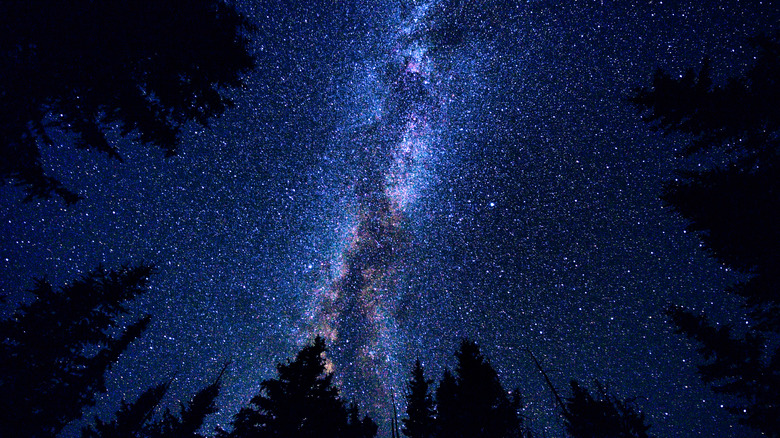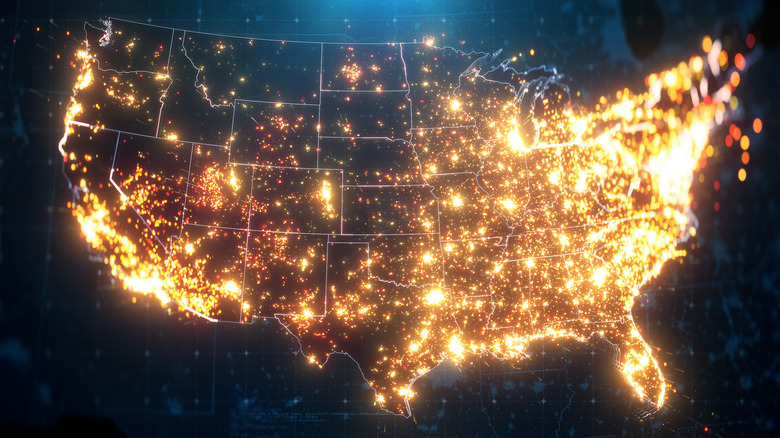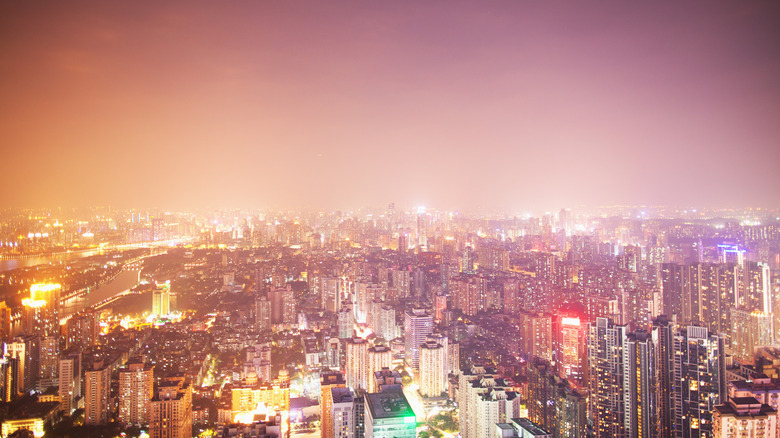There's A Startling Number Of People Who Can't See The Milky Way Galaxy
Looking up into the night sky and seeing the hazy arc of the Milky Way above is one of the most quietly profound experiences a person can have. That arc in the sky is actually a side view of the galactic disk, and it is so jam-packed with stars that we don't even know how many solar systems the Milky Way holds. Staring at this shimmering band is a reminder of just how rare each life is within the vastness of the galaxy, but these days, around a third of the human population is unable to experience this inspiring sight.
The reason that so many people can't see the Milky Way actually has nothing to do with the stars themselves, or Earth's position within the galaxy. The visible portion of the Milky Way changes depending on your location and the time of year, but you should always be able to see some portion of it. Unfortunately, humans have created a problem that now prevents a major portion of the population from witnessing their cosmic surroundings: light pollution.
Every streetlight, every neon sign, every light in every window of every building all come together to illuminate vast stretches of the sky, and all of that light rising up from the ground obscures the distant lights that twinkle down upon us from the cosmos. As urban areas grow and grow, the problem grows worse and worse, and in certain parts of the globe, there's almost no chance to ever see the Milky Way.
How bad is light pollution around the world?
There are three general types of light pollution. Glare refers to the effect of unshielded lights, that is, lights fixtures without any form of overhead cover to direct their luminance downward. Bare bulbs allow light to scatter much further, and they hamper our ability to see clearly by reducing the contrast between different objects. Light trespass is another form of light pollution, which is like a stray bullet of glare. It refers to light reaching places it isn't meant to, like stadium lights leaking through the windows of people who live nearby. Lastly, there is skyglow, which is the accumulation of light that rises into the sky. This is the type of light pollution that blocks out views of the stars.
A 2016 study published in Science Advances mapped skyglow around the world and found that 80% of the human population is affected by light pollution, and for a third of the population, it is so severe that they cannot see the Milky Way. The problem is worst in urban areas, and the Light Pollution Map shows that it's particularly bad in the United States, Europe, India, and East Asia. The 2016 study found that half of the land area of the U.S. and nearly 90% of the land area in Europe suffer from light pollution. However, due to populations being concentrated in cities, that land area actually equates to 99% of Americans and Europeans who have little chance to see the stars.
The impacts of light pollution
Light pollution is a factor that often gets overlooked in discussions about climate change. While greenhouse gas emissions and landfill waste desperately need addressing, we must also acknowledge that light is a pollutant as well, and it combines with other types of pollutants, exacerbating its effects. Greenhouse gas particles in the air scatter light, and clouds reflect it, turning the brightness level of skyglow up by as much as 1000 times.
One way that light pollution harms the environment is by throwing off day and night cycles. Animals rely on these cycles to know when to eat and sleep, and their sense of time is upset when the night sky doesn't actually get dark. Some populations suffer from being more visible to their predators, especially insects that are attracted to light. On top of that, light and dark affect plant growth, upsetting the balance of nature.
Humans share in this suffering. Our own circadian rhythms are disturbed by light pollution, preventing many people from getting the sleep they need to maintain their health. As for the impact on stargazing, light pollution is a detriment to science. Not only does the population at large struggle to see the Milky Way, but astronomers have fewer and fewer places to study the galactic disk. This could dwindle new generations of potential scientist, since so many children cannot experience the inspirational awe of that magical milky arc.


